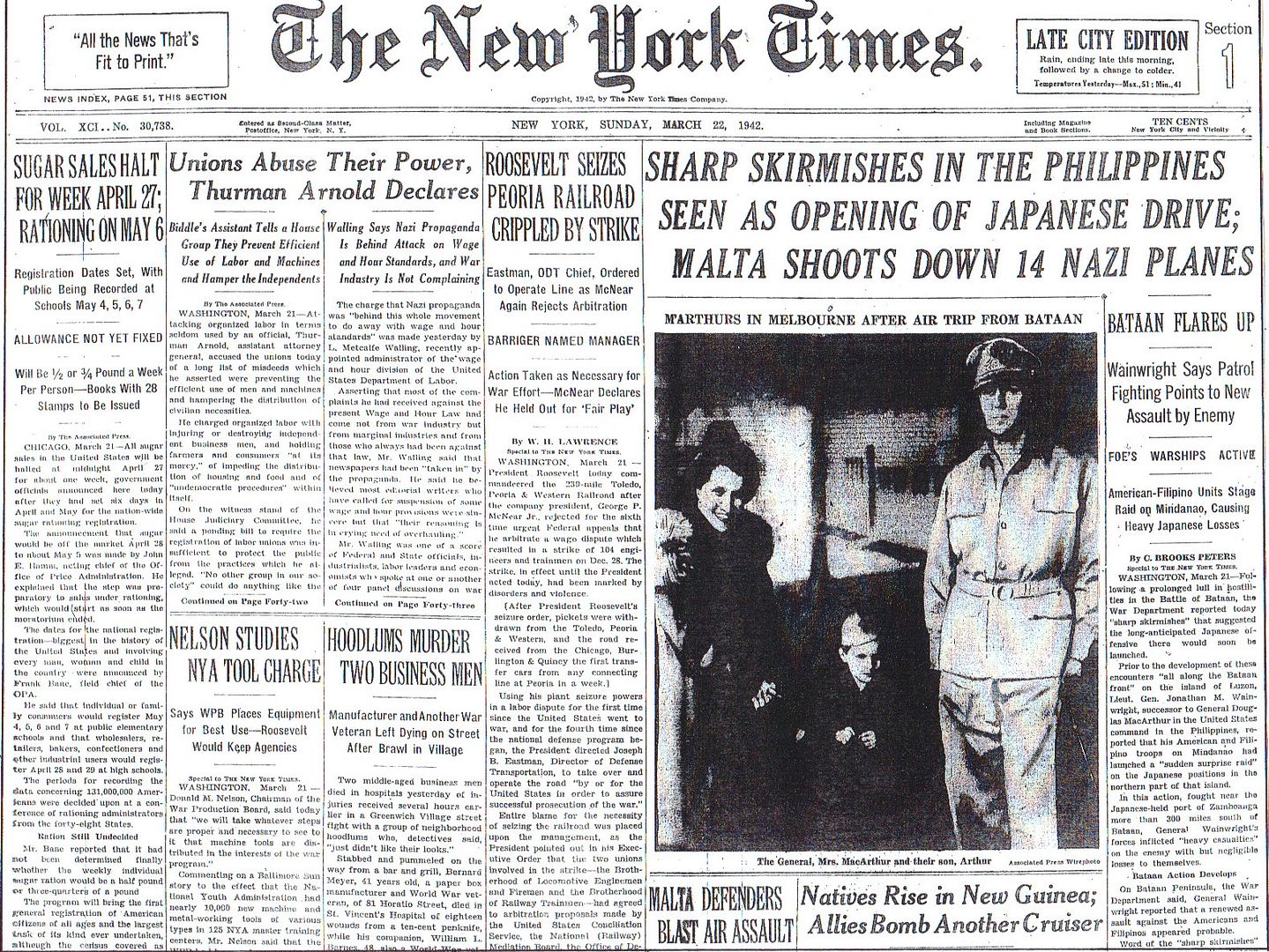
Posted on 03/22/2012 4:41:20 AM PDT by Homer_J_Simpson

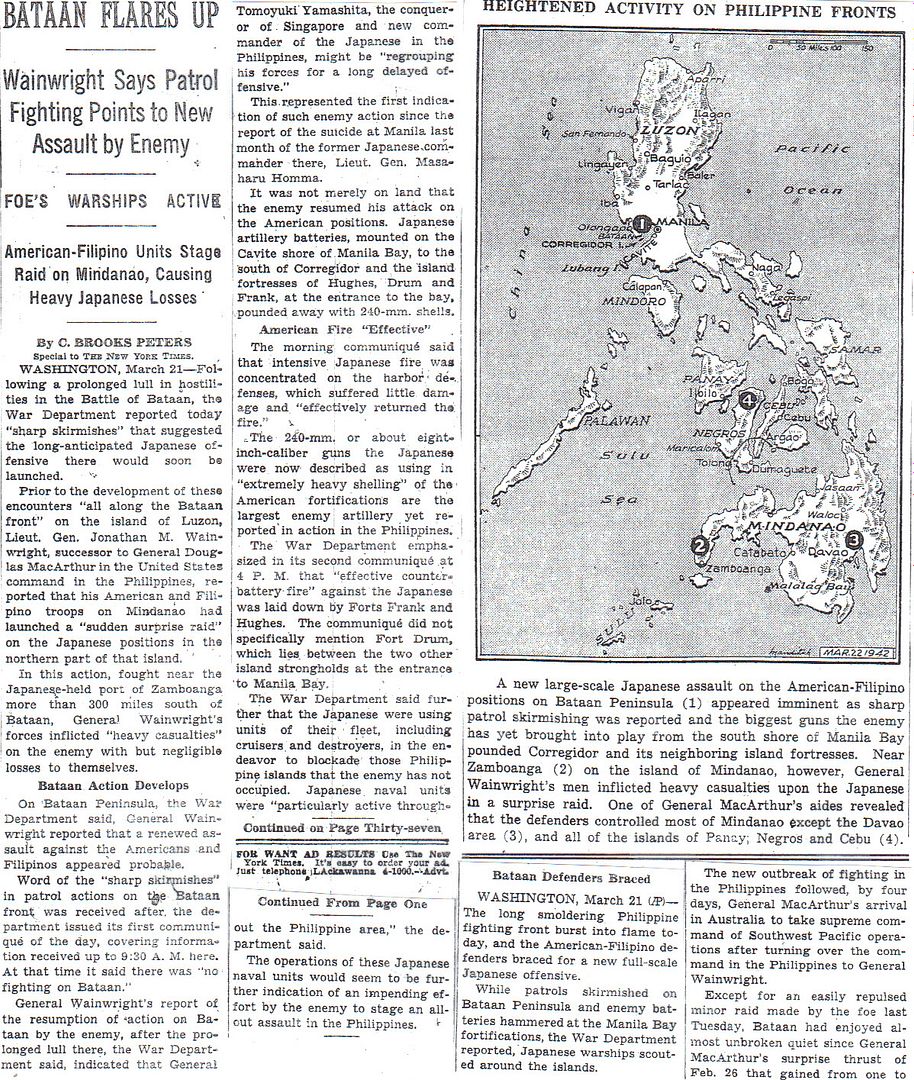
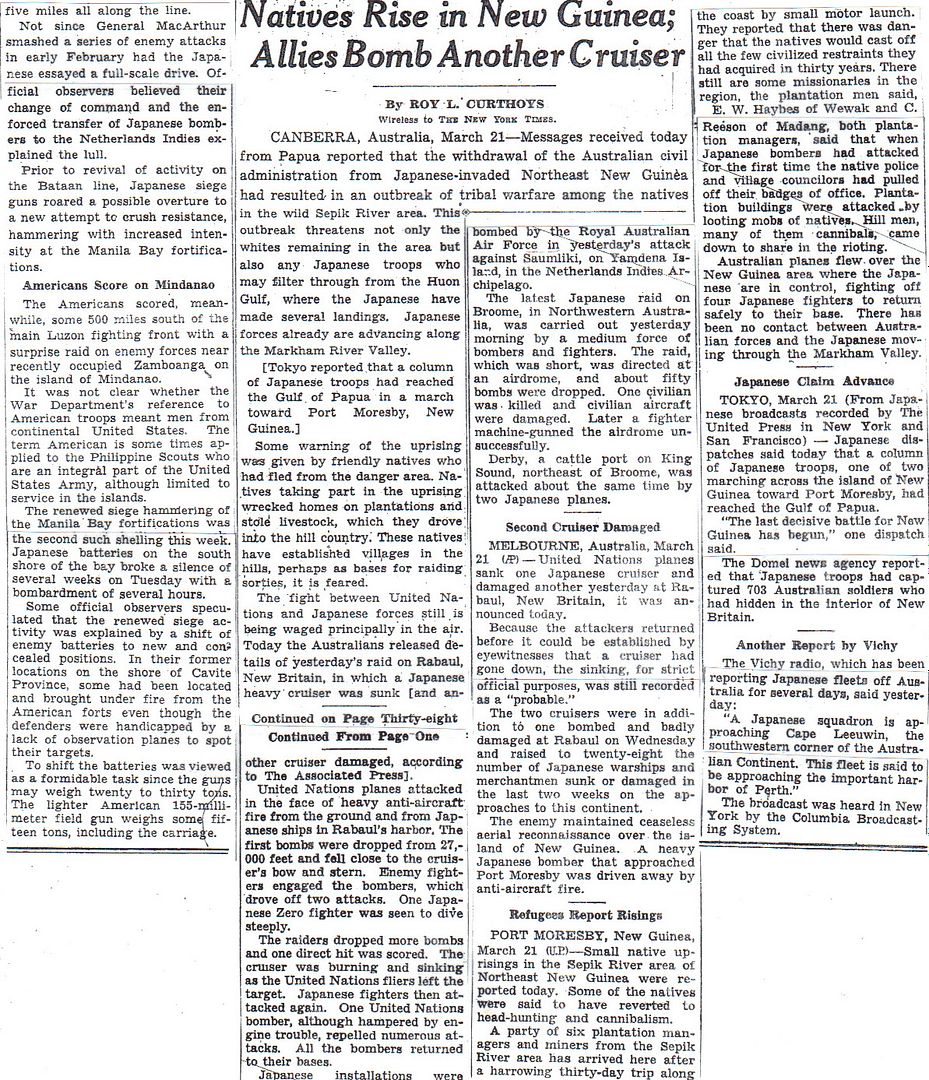

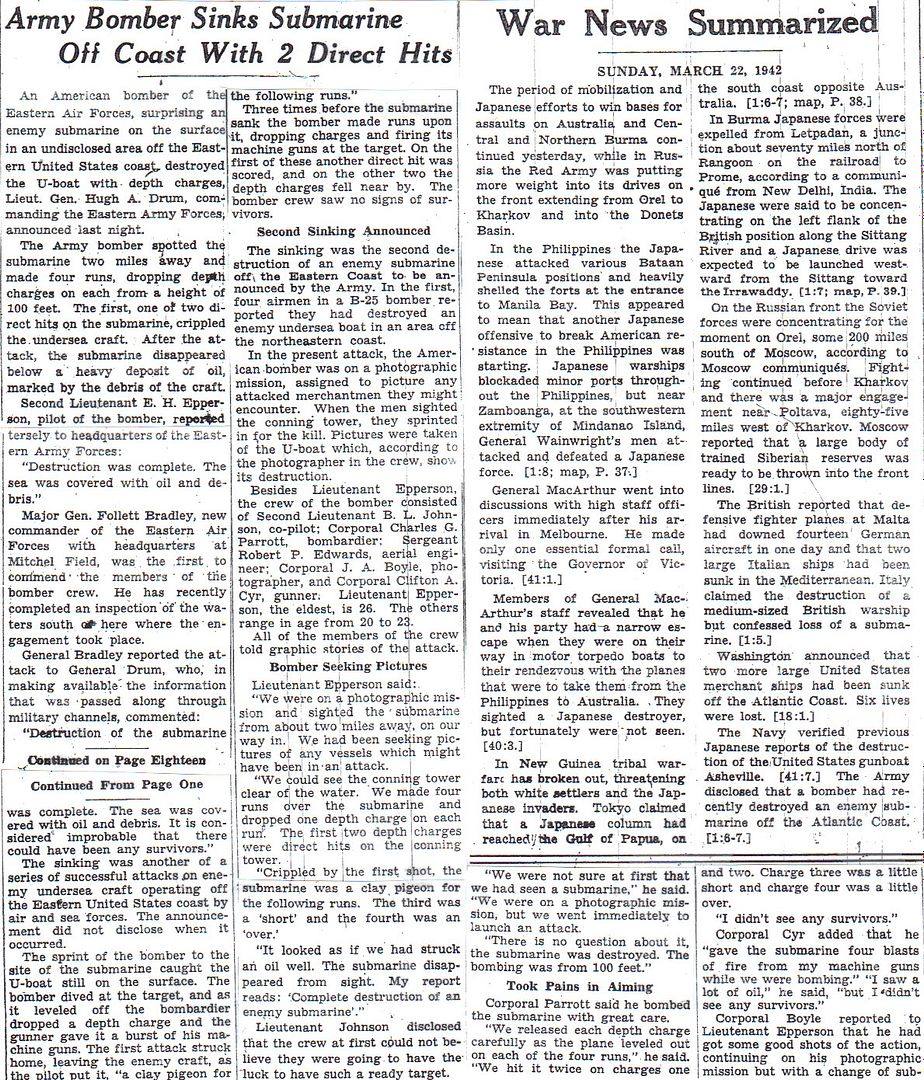
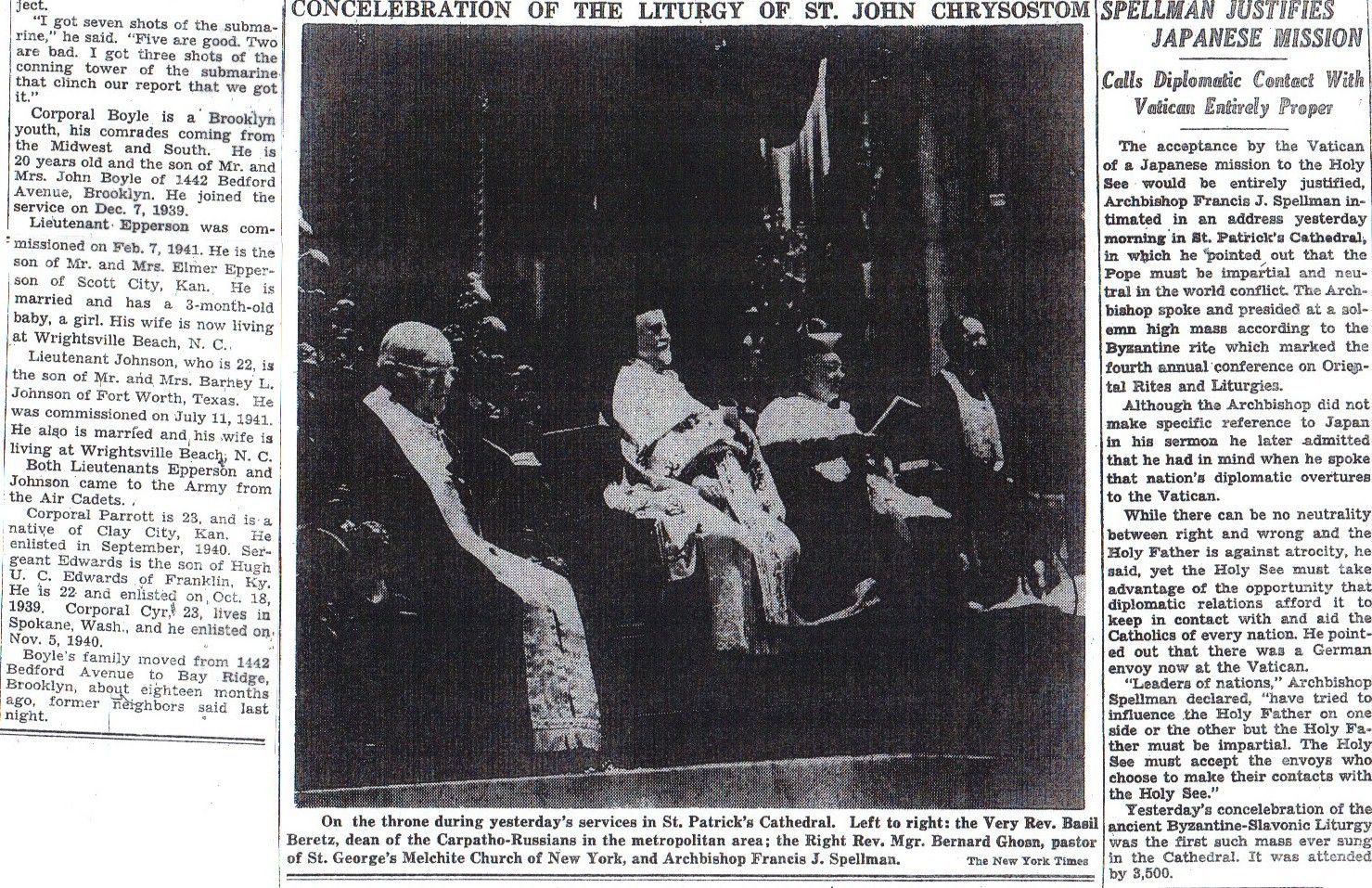



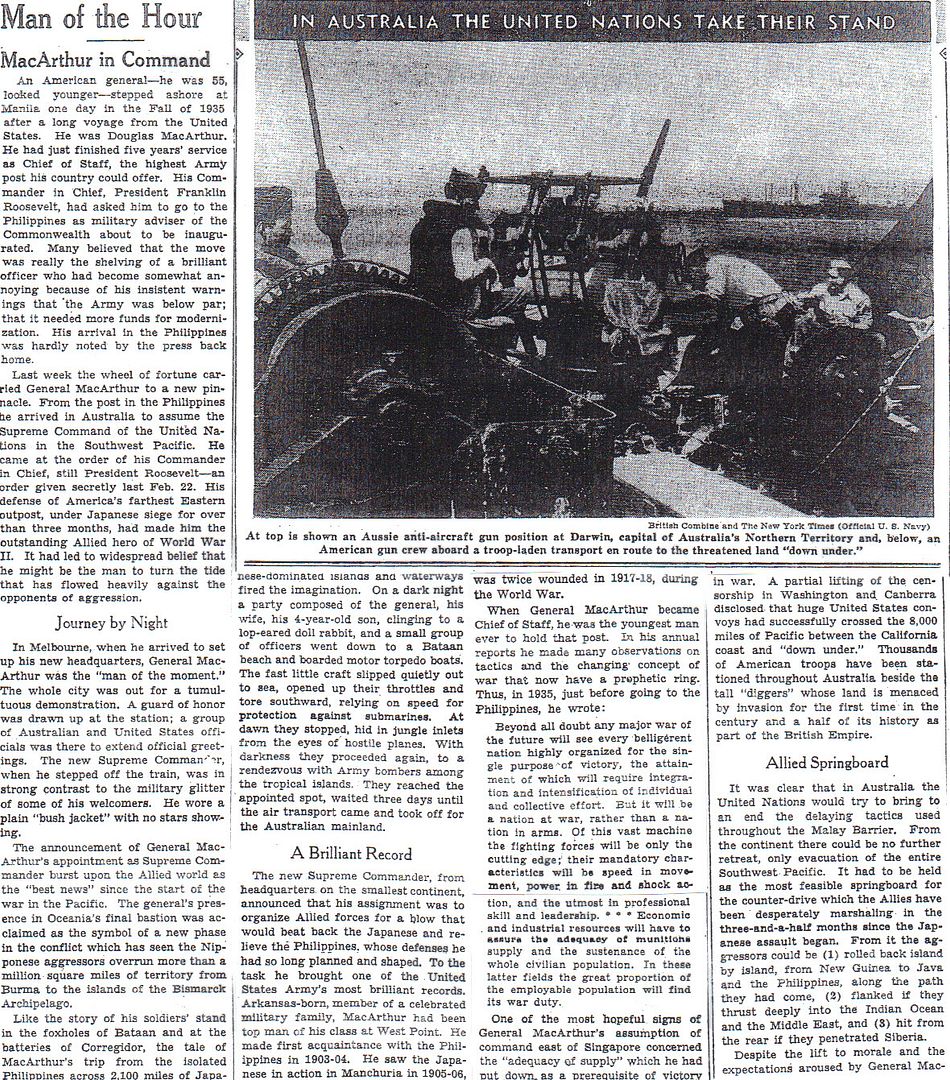

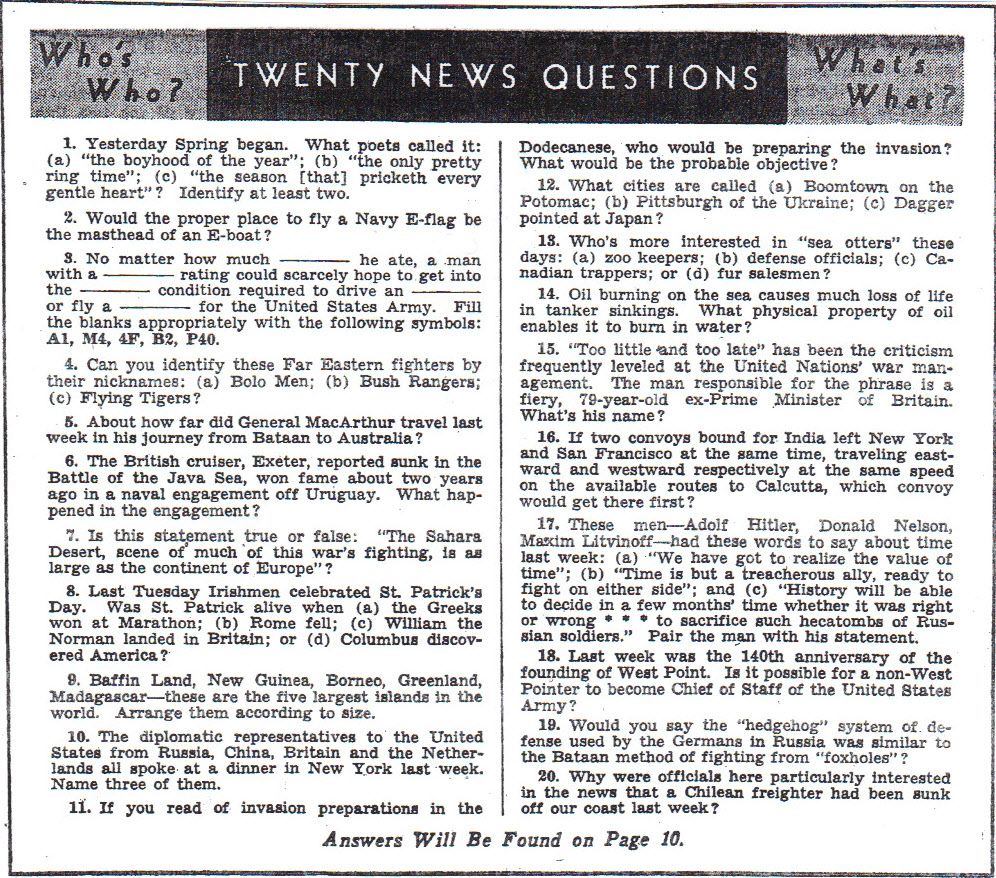
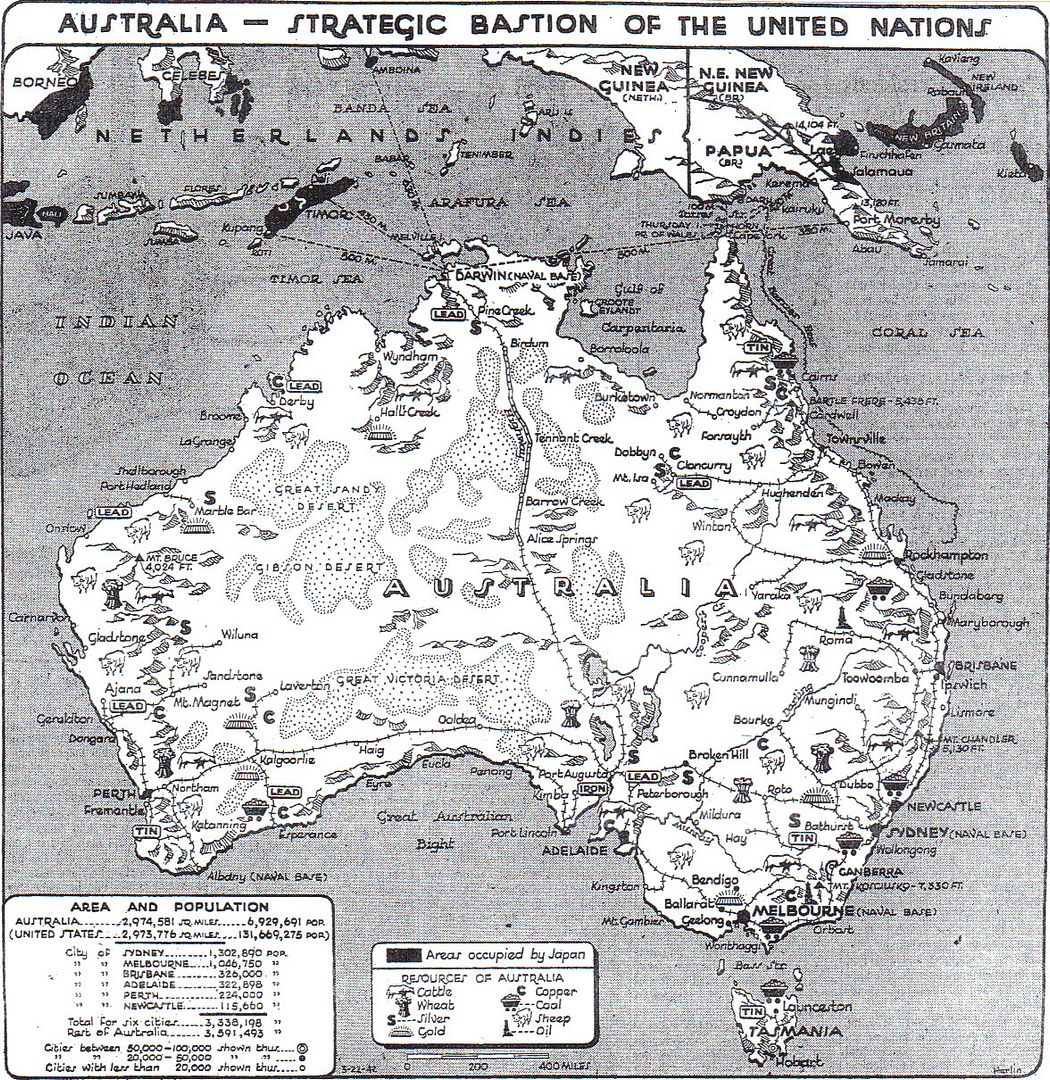
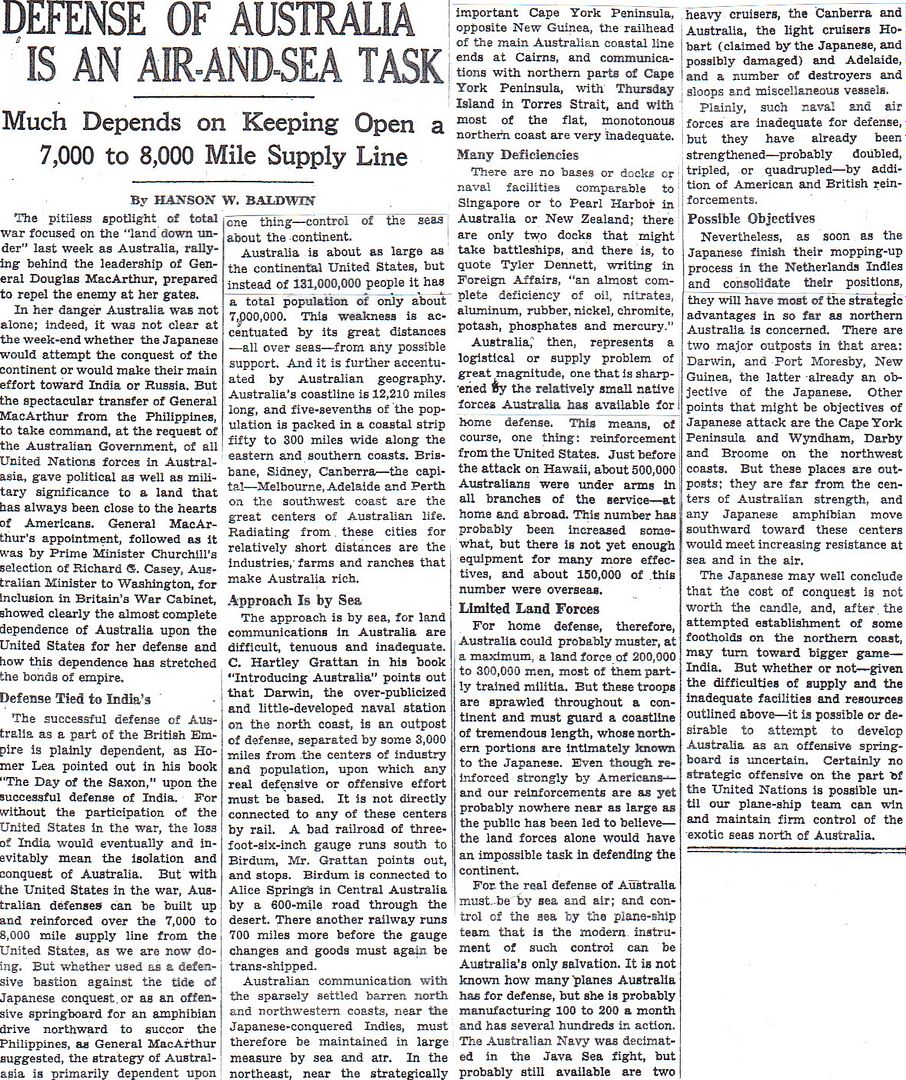
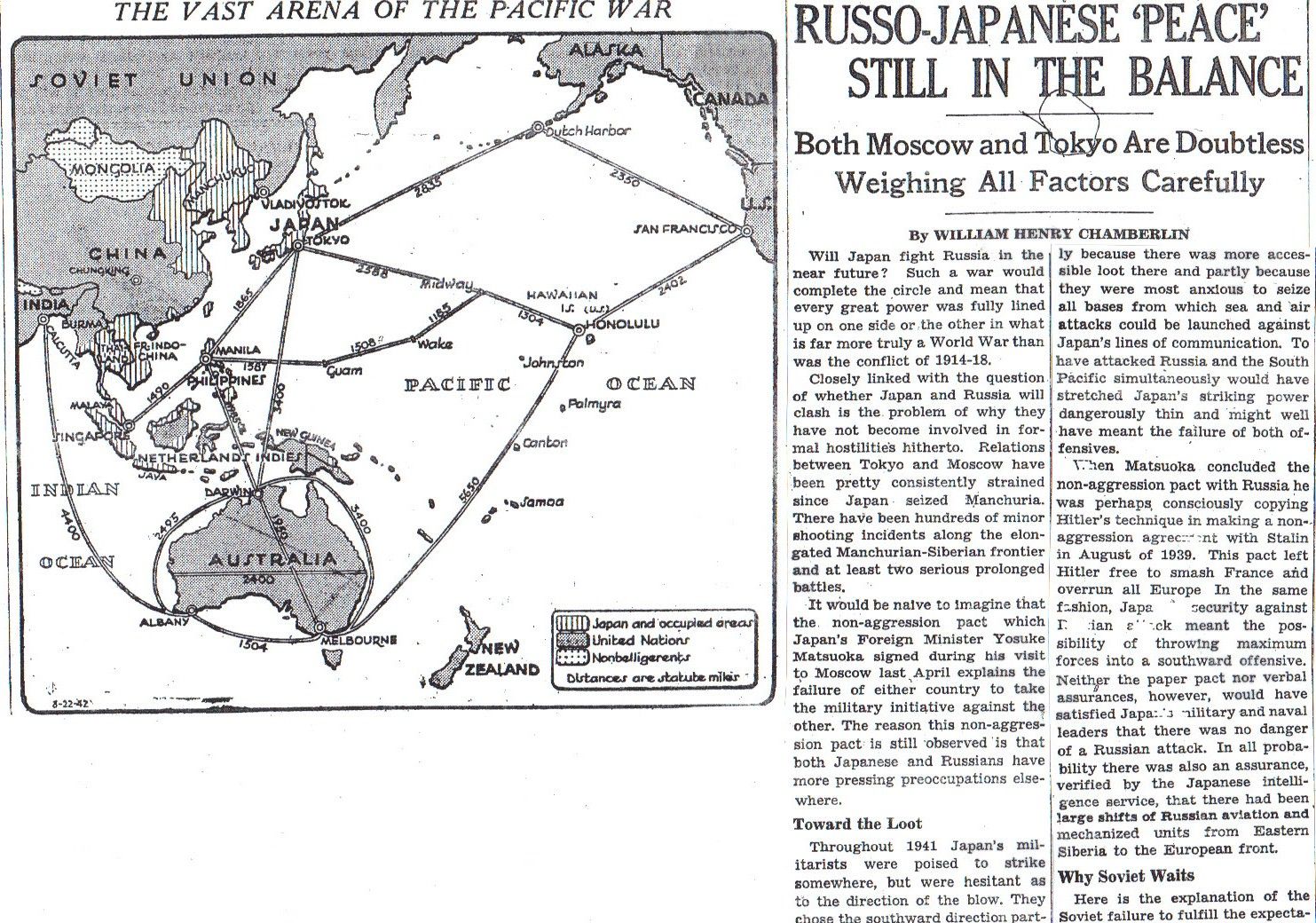
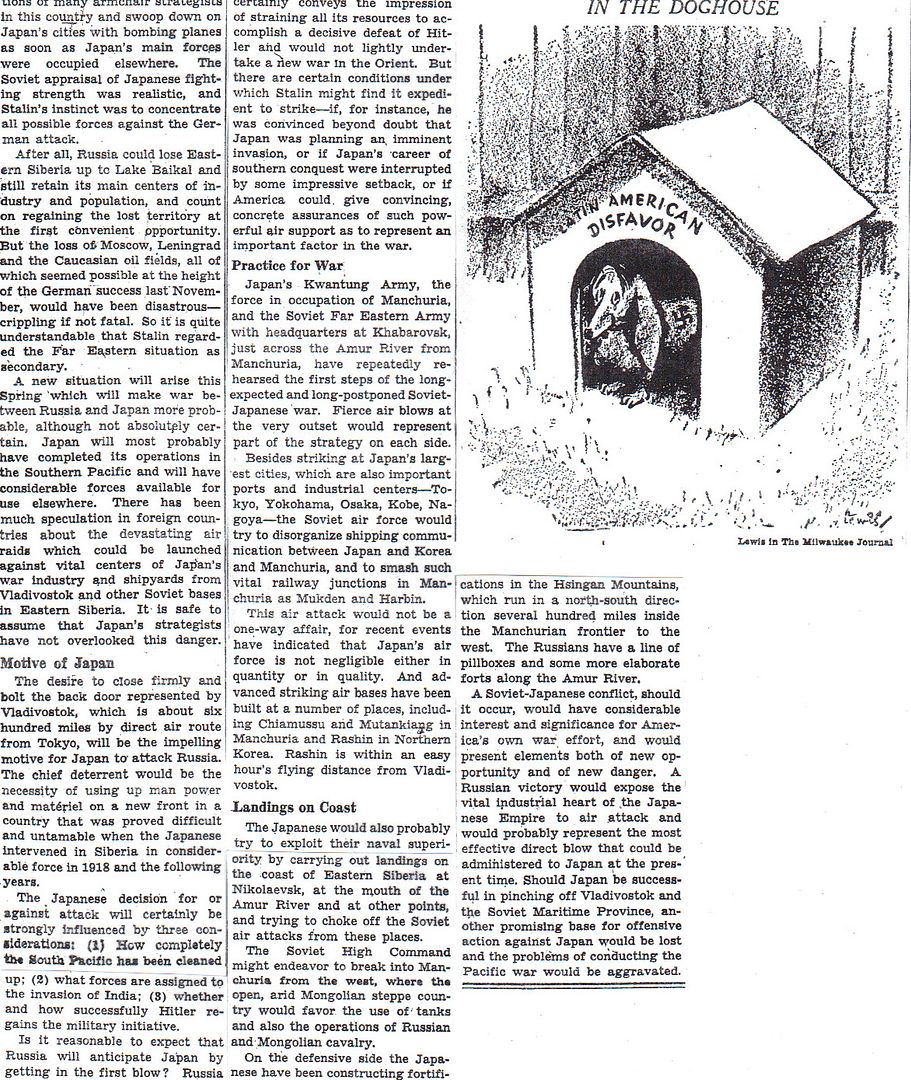
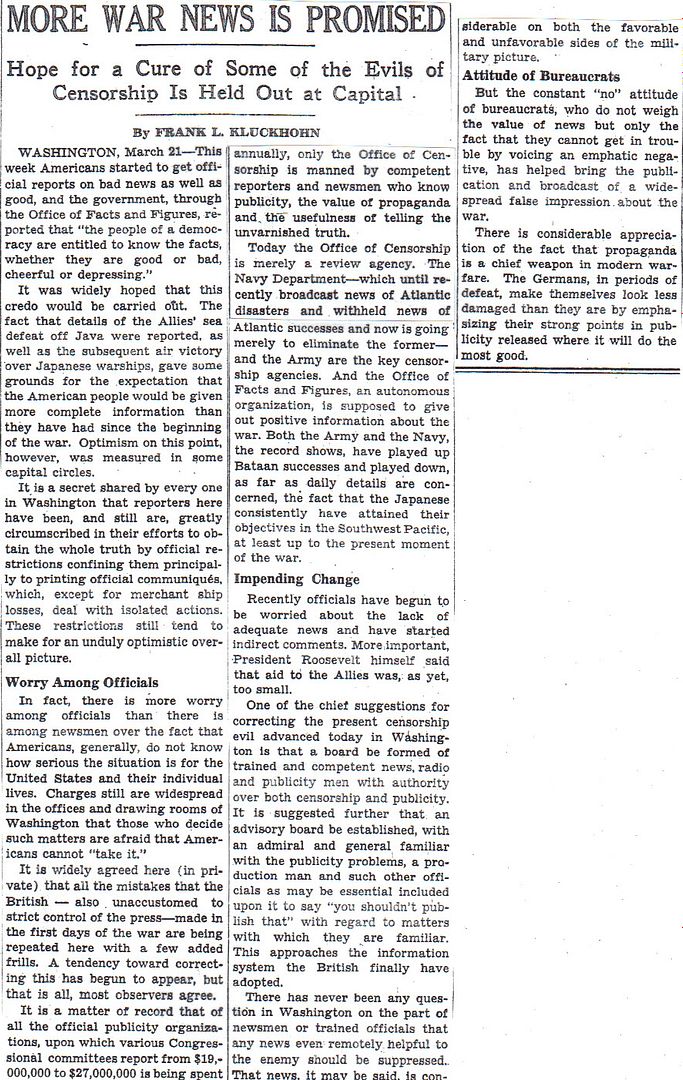
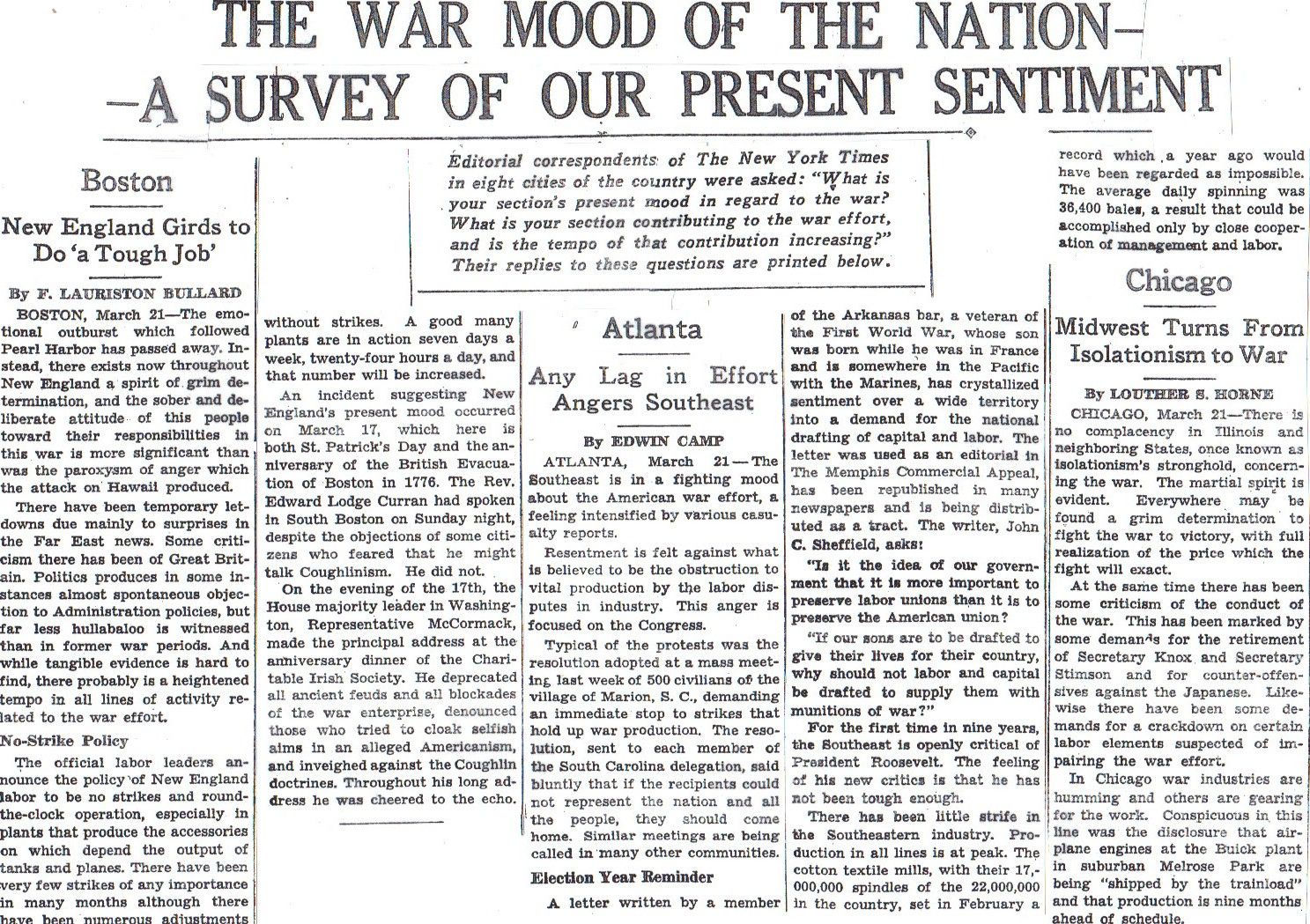

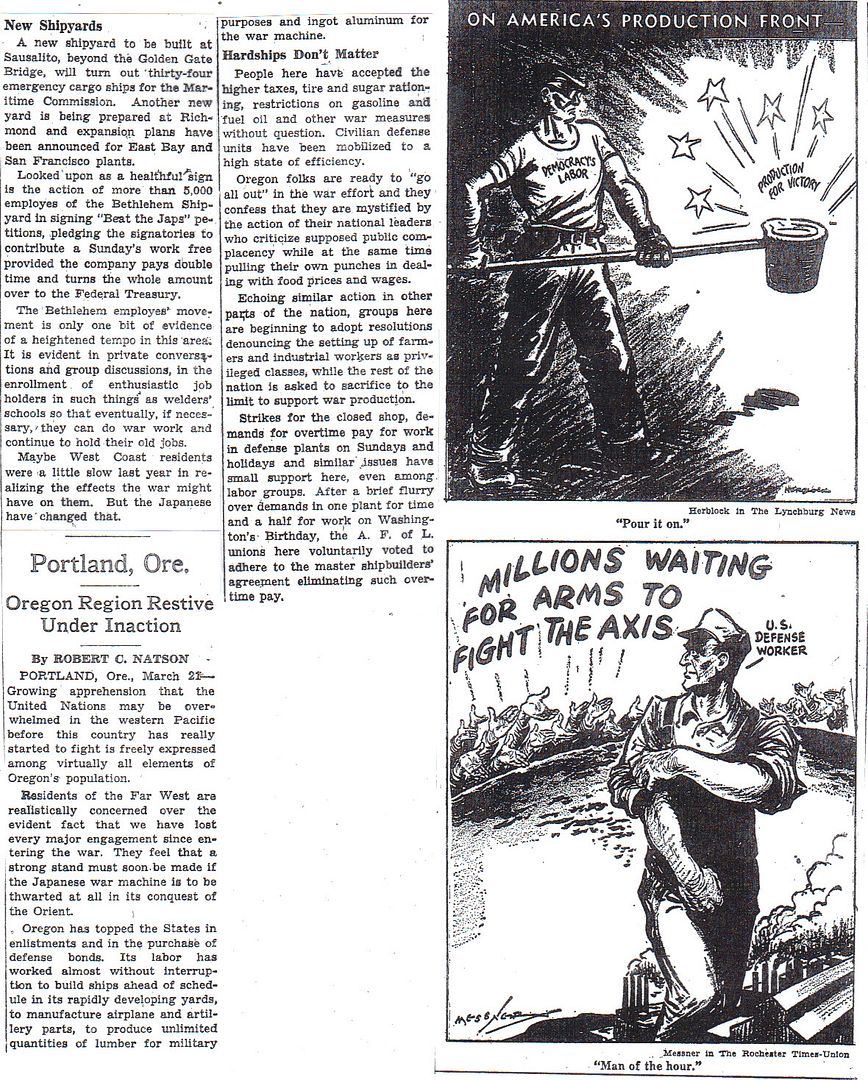
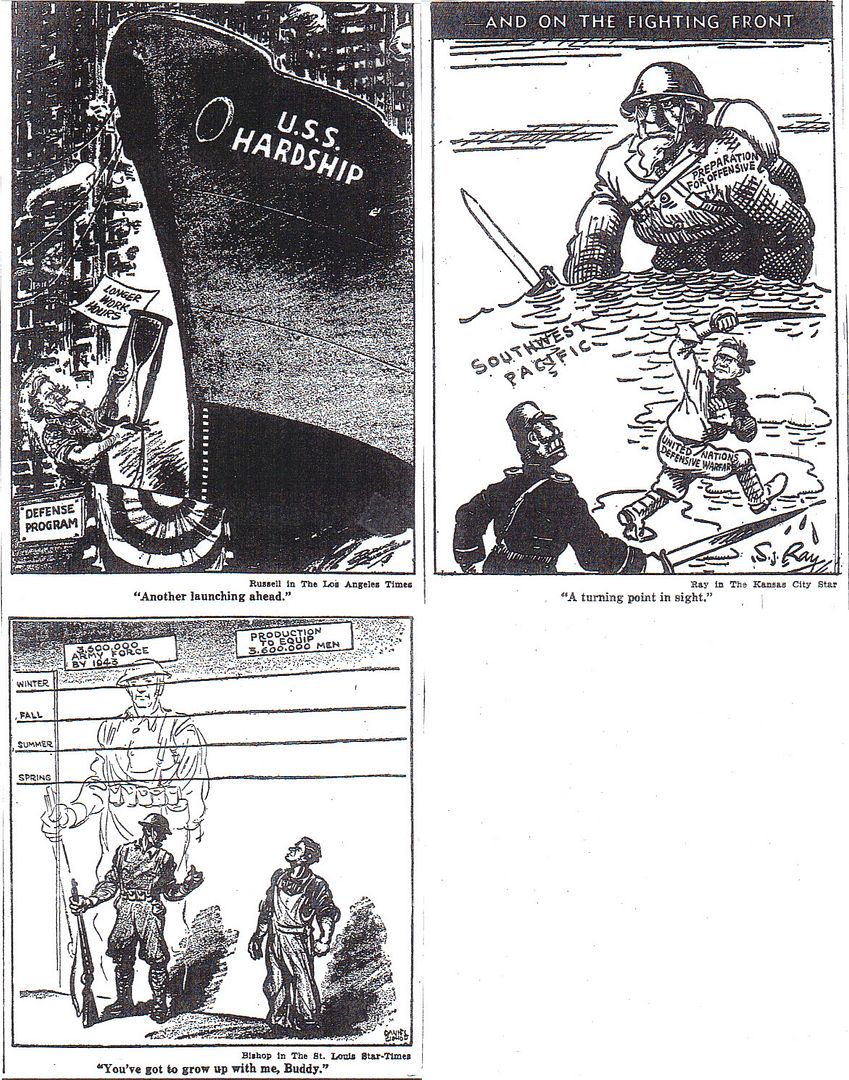
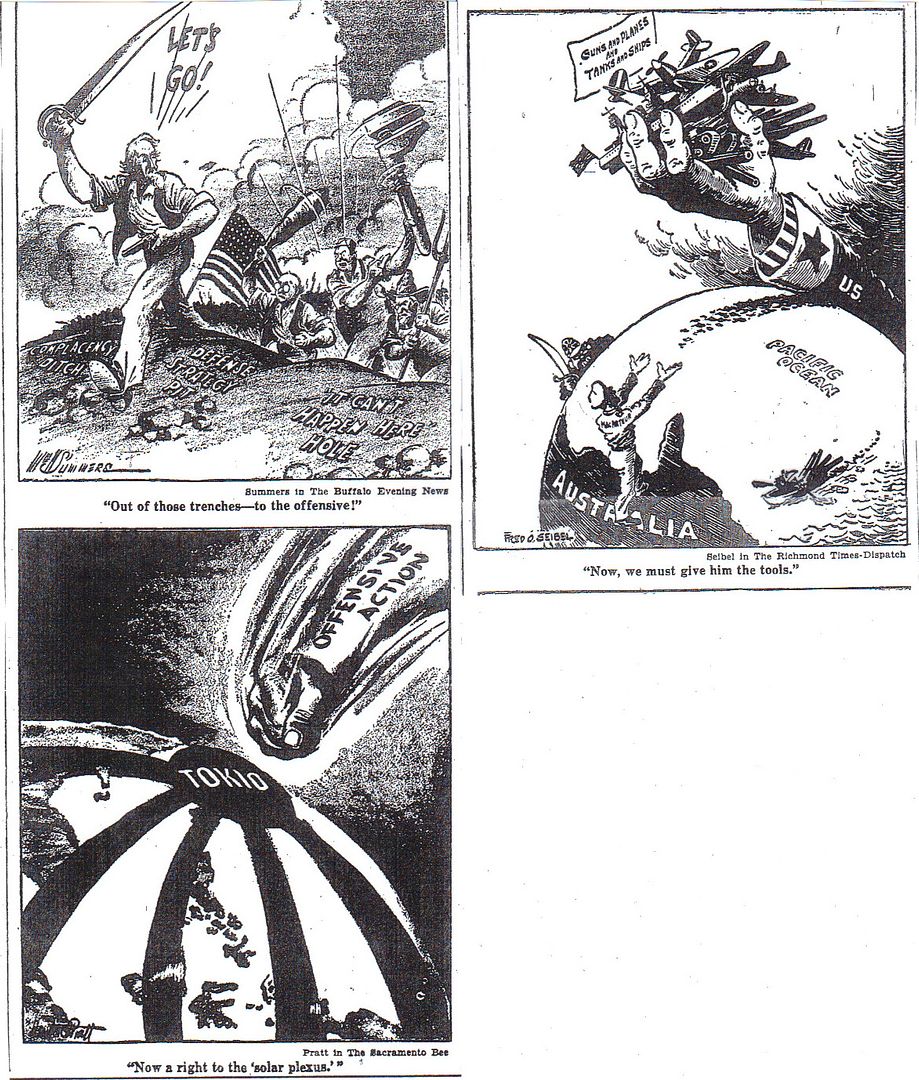

The News of the Week in Review
Man of the Hour – 10-11
Twenty News Questions – 12
Australia-Strategic Bastion of the United Nations (map) – 13
Defense of Australia is an Air-and-Sea Task (Baldwin) – 14
The Vast Arena of the Pacific War (map) – 15
Russo-Japanese ‘Peace’ Still In the Balance (Chamberlin) – 16-17
More War News is Promised (Kluckhohn) – 17
The War Mood of the Nation-A Survey of Our Present Sentiment (various authors) – 18-22
Answers to Twenty News Questions - 23
The Flexmaster shoes for $11.95 would cost $166.91 in 2012 dollars. Pricey, pricey.
http://www.onwar.com/chrono/1942/mar42/f22mar42.htm
Conditions on Malta critical
Sunday, March 22, 1942 www.onwar.com
Buildings reduced to rubble on MaltaIn the Mediterranean... The Italians send out the battleship Littorio, two heavy cruisers, one light cruiser and eight destroyers to intercept the British convoy to Malta carrying vital food supplies and ammunition. The convoy is located, but the British escort under Admiral Vian manages to beat off the attack using torpedoes and smokes screens. The heavy attacks by German and Italian forces continue and only 5000 tons of food and equipment is off loaded at Malta. The food and weapons situation on the island is now critical.
http://homepage.ntlworld.com/andrew.etherington/frame.htm
March 22nd, 1942
UNITED KINGDOM: The BBC begins transmitting news bulletins in Morse code for the benefit of resistance fighters in mainland Europe. (Jack McKillop)
FRANCE: Paris: A sailor, Hugel, is wounded by revolver firing.
A German civilian, Spiegler, is shot in the stomach at Villacoublay.
GERMANY: King Boris of Bulgaria arrives in Berlin to meet with Chancellor Adolf Hitler. The meeting is interpreted as a German demand for additional manpower for the upcoming German offensive in the Soviet Union. (Jack McKillop)
CZECHOSLOVAKIA: Prague: Paul Thummel, an important double agent in the Abwehr [German military intelligence] is arrested.
POLAND: A Polish newspaper editor is beheaded for listening to a British Broadcasting Corp. (BBC) radio broadcast. (Jack McKillop)
MEDITERRANEAN SEA: The Second Battle of Sirte. During the night of the 21st/22nd, Italian warships under Vice Admiral Angelo Iachino begin leaving port to attack the British convoy sailing from Alexandria, Egypt to Malta. The battleship Littorio and four destroyers leave Taranto; and the heavy cruisers Gorizia and Trento, light cruiser Bande Nere and four destroyers leave Messina. The Littorio group is sighted by a British submarine patrolling off Taranto, giving the British forces an early warning. The ships head for the Gulf of Sirte on the north central coast of Libya where they calculate they will encounter the British ships but due to fierce weather, the Italian formation could not achieve more than 22 knots, and one of the escorts left due to an engine breakdown. At 0930 hours, Savoia-Marchetti S.M. 79-II torpedo-carrying aircraft attack the British convoy but fail to score any hits. The RN convoy consists of four merchant freighters escorted by the light cruisers HMS Cleopatra, Dido, Euryalus and Penelope, the antiaircraft light cruiser HMS Carlisle and 18 destroyers. At 1240 hours, an Italian scout plane from Trento reports sighting the convoy and also the fact that there is no RAF air cover. At 1330 hours, the Italian cruisers sight the British who wrongly identified them as battleships and the Italian formation then maneuvers to draw the British towards the battleship Littorio. For more than an hour the two formations chased each other while the wind grew even stronger. At 1630 hours, the battleship Littorio joins the fighting, causing the British to quickly withdraw behind a thick smoke screen. British destroyers made several desperate runs against the Littorio, but the battleship’s 15-inch (38,1 cm) guns inflict serious damage. The Littorio itself received a smaller calibre shell which did not inflict any damage. With darkness approaching, Vice Admiral Angelo Iachino, in command of the Italian forces, breaks off the engagement. According to British reports, light cruiser HMS Cleopatra has its after turret demolished by the light cruiser Bande Nere; the destroyer HMS Havock was, for a time, left dead in the water by a direct hit; the destroyer HMS Sikh was also hit, along with the destroyers HMS Lively, Legion, Lance and Kingston. Also the light cruisers HMS Euryalus and Penelope were considerably damaged. The Italian force, along with the minor damage to the Littorio, lost the destroyers Scirocco and Lanciere to incredibly violent seas as they returned to port. (Jack McKillop)
MALTA: Lt. Dennis Arthur Copperwheat (b.1914), RN, led a party to scuttle a blazing ammunition ship, sending others to safety before firing charges. (George Cross)
BURMA: Japanese aircraft make another destructive attack on Magwe Airdrome, forcing the American Volunteer Group 3d Fighter Squadron (AVG, aka, “The Flying Tigers) and RAF aircraft to withdraw to Loiwing (on the Chinese frontier) and Akyab, respectively; troops defending Burma are thus denied close air support. Lieutenant General Joseph Stilwell, Commanding General American Army Forces, China, Burma and India and Chief of Staff of the Chinese Army, upon arriving at the front, begins planning for a counterattack in support of the Chinese 200th Division at Toungoo. The Chinese continue to withstand Japanese pressure against Toungoo from the south. (Jack McKillop)
INDIA: Sir Stanford Cripps, British statesman and member of the War Cabinet, arrives in India for talks with Mohandas Gandhi, in what will become known as the Cripps Mission, to discuss two pressing issues: Japan’s threat to India, and India’s independence from Britain. The first meeting takes place today and the first item on the agenda is India’s defence against a growing Japanese empire. Cripps wants to rally the Indian National Congress, and its leader Mohandas K. Gandhi, behind the cause. Gandhi was at the center of India’s quest for independence from British colonial rule. The Cripps Mission fails; Cripps returned to Britain and was eventually transferred to the Ministry of Aircraft Production. Gandhi was arrested as a “threat” to Indian security and is interned for two years before health issues forced his release. (Jack McKillop)
COMMONWEALTH OF THE PHILIPPINES: Bataan defenders are eating less than 15 ounces (425 grams) a day, one-fourth the peacetime ration, mostly gummy rice. All 250 horses and 48 pack mules of the 26th Cavalry Regiment have been shot and eaten. Troops find rice growing in no-man’s land and thresh it in their foxholes. Other American soldiers dine on dogs, iguanas, even python eggs. Some troops rob supply trucks at gunpoint while supply officers pad strength reports and don’t list casualties, to gain extra food. Shortages on Bataan go down to cigarettes, soldiers get one a day, and pay US$5 for a five-cent pack. (Considering inflation, US$5 in 1942 is equal to US$56 in year 2003 dollars.) Uniforms, shoes, blankets, all fall apart and go unrepaired. Poorly clothed and badly fed, American troops also fall to diseases like diarrhoea, dysentery and beri-beri, due to their low vitamin levels. Everyone seems to have malaria. Barefooted Filipino troops suffer the hardest, particularly because of their poor sanitation. Hospitals with capacities of 1,000 are caring for more than 3,000. Against this, the Japanese have moved in troops from Shanghai and Indochina, siege guns from Hong Kong, and heavy bombers from Malaya. Even so, General HOMMA Masaharu, commanding the Japanese 14th Army, worries that his samurai will be defeated. He wonders whether the Americans will spring some new trick on him so Homma orders his heavy artillery of the Hayakawa Detachment to stop shelling Corregidor from the south side of Manila Bay and head for Bataan. (Jack McKillop)
NEW GUINEA: RAAF No. 75 Squadron, based at Seven Mile Airdrome, Port Moresby, makes it combat debut. Six Curtiss Kittyhawks Mk. IAs (= USAAF P-40Es) make a surprise attack at dawn on the Japanese forces at Lae. Two pilots are given credit for shooting down two Mitsubishi A6M2, Navy Type 0 Carrier Fighters (later assigned the Allied Code Name “Zeke”); two Kittyhawks are lost with the loss of one pilot.
AUSTRALIA: A single Mitsubishi Ki-15, Army Type 97 Command Reconnaissance Plane (later assigned the Allied Code Name “Babs”) takes off from Koepang, Timor, to reconnoiter the defenses of Darwin, Northern Territory, in readiness for a larger strike force of Mitsubishi G4M, Navy Type 1 Attack Bombers (later assigned the Allied Code Name “Betty”). Coast watchers on Bathurst Island notify Darwin of the approaching reconnaissance aircraft at about 1200 hours and it is shot down by USAAF P-40 pilots of the 9th Pursuit Squadron (Interceptor). As anticipated, the Japanese bombers make a raid that same day but not on Darwin. They fly 200 miles (322 kilometres) further southeast and bomb Katherine, Northern Territory. They presumably were hoping to find Allied bombers at the Katherine Airfield but none were there and damage at the airfield is minimal. Officially described as: “An aborigine was killed, another wounded and some damage was done to the aerodrome.” (Jack McKillop and Daniel Ross) Japanese aircraft bomb Darwin, Northern Territory. (Jack McKillop)
General Douglas MacArthur arrives in Melbourne, Victoria, and is greeted by more than 6,000 local citizens and an honour guard of 360 US troops, most of them Signal Corps and engineers in white tropical helmets. There is no band. MacArthur inspects the troops, issues a statement lauding Australian soldiers, and hops into a Wolsley limousine that takes him to the Menzies Hotel. Jean MacArthur’s first move is to summon a dressmaker to prepare her something to wear on Monday morning, when she goes to buy clothes to replace her wardrobe, left behind in Manila. MacArthur’s 11-day, 3,000-mile (4828 kilometer) odyssey is headline news around the world. German Propaganda Minister Dr. Joseph Goebbels calls MacArthur a “coward,” and the Japanese call him a “deserter” who “fled his post,” thereby admitting “the futility of further resisting Japanese pressure in the southern extremity of the Bataan peninsula.” (Jack McKillop)
U.S.A.: President Franklin D. Roosevelt sends a message to General Douglas MacArthur in Australia expressing his desire that Lieutenant General Jonathan Wainwright control all forces in the Philippines; MacArthur concurs. (Jack McKillop)
The first removal of people of Japanese descent from the designated Pacific Coast area occurs. The people are from the Los Angeles area; they are sent to the Manzanar relocation center in northeastern California. The center comprises a 6000 acre site, enclosed by barbed wire fencing, and within that site a 560 acre residential site with guard towers, search lights, and machine gun installations. During the next eighteen months, about 120,000 people of Japanese descent are removed from the Pacific Coast area to ten relocation centers in California, Arizona, Idaho, Wyoming, Colorado, Utah, and Arkansas. (Scott Peterson) More...
ATLANTIC OCEAN: Two unarmed U.S. merchant tankers are torpedoed and sunk by German submarines in the Western Hemisphere. (1) U-124 sinks the first ship about 98 miles east southeast of Wilmington, North Carolina, U.S.A; this is the ninth ship torpedoed by this submarine off the North Carolina coast since 17 March. (2) U-123 sinks the second ship about 840 miles (1352 kilometres) northeast of San Juan, Puerto Rico. U-123 draws near to the survivors on two rafts and questions them before clearing the area; none of the 34-man crew, however, are ever seen again. (Jack McKillop)
Someday, I will spend time reading more Australian accounts of fighting in New Guinea. Already in 1942, the Australians were encountering instances of the Japanese soldiers committing acts of cannibalism more ritualistic in nature than survival based. By the late war years, Japanese soldiers bypassed in New Guinea were engaged in wider spread cannibalism.
Filipino guerrillas knew the Japanese were cruel but as Japanese troops began being withdrawn from New Guinea to the Philippines, Filipino guerrillas reported that the Japanese from New Guinea were bestial in their savagery.
A 1950's japanese movie Fire on the Plains http://www.youtube.com/watch?v=jJ6_AOoideM set in the Philippines, in 1945 touched on the cannibalism by Japanese troops in New Guinea as well as cannibalism by Japanese troops in the Philippines.
Fine. If you are happy to perform you job at the defense factory or pound the pavement during your air raid warden rounds in a pair of cheap shoes be my guest. But they won’t make you feel like you are walking in your socks.
Disclaimer: Opinions posted on Free Republic are those of the individual posters and do not necessarily represent the opinion of Free Republic or its management. All materials posted herein are protected by copyright law and the exemption for fair use of copyrighted works.